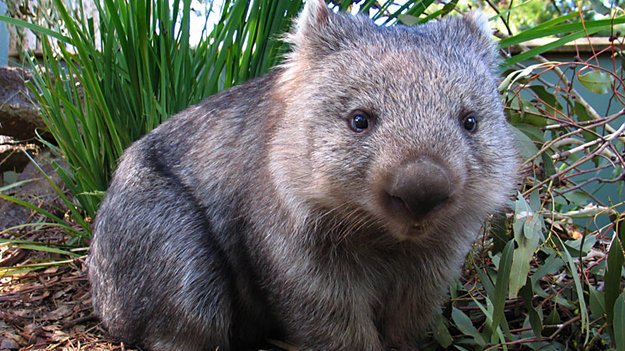
Imagine you’re sitting down with a friend over coffee, sifting through the latest wildlife documentaries, and you stumble upon some heartbreaking statistics about wombats. Their numbers are declining, and the threats they face might surprise you. Are they on the brink of extinction, or is there hope for their future? Let’s explore the current state of wombat conservation, the challenges they face, and what we can do to help protect these furry creatures.
The Current Status of Wombats
Wombats are fascinating creatures that belong to the family *Phascolomidae*. They’re primarily found in Australia, with three species known: the common wombat, the northern hairy-nosed wombat, and the southern hairy-nosed wombat. Among these species, the southern hairy-nosed wombat is classified as Least Concern, while the northern hairy-nosed wombat is critically endangered. This species has fewer than 250 individuals left in the wild, highlighting the urgent need for conservation efforts.
The IUCN Red List provides assessments of species and their risk of extinction. It’s like a wildlife report card. Here’s how the species stack up:
- **Common Wombat**: Least Concern
- **Southern Hairy-nosed Wombat**: Near Threatened
- **Northern Hairy-nosed Wombat**: Critically Endangered
So, while you might see wombats happily waddling around in parks, this isn’t the case for all species. The northern hairy-nosed wombat, in particular, needs our attention.
Threats to Wombat Populations
You might be wondering what’s causing wombat numbers to decline. Honestly, the threats are complex and varied.
First up is **habitat loss**. Urban expansion and agriculture mean more land is being taken over, which leaves wombats with fewer places to dig their burrows. Think of their homes as intricate underground cities. When these cities disappear, it’s not just the wombats that suffer; the entire ecosystem feels the impact.
Next, we have **disease**. Wombats are susceptible to a condition called sarcoptic mange, caused by tiny mites that burrow into their skin. This leads to severe itching and hair loss, making them vulnerable to the elements and predators. The unfortunate part? In areas where wombat populations are already thin, these diseases can spread rapidly and have devastating effects.
Lastly, there’s **competition**. As their habitats shrink, wombats often compete with livestock for food. It’s like trying to squeeze into the last seat on a crowded bus—you might not get what you need, and tensions can run high.
Conservation Efforts for Wombats
Fortunately, there are ongoing efforts to help wombats, especially the endangered northern hairy-nosed wombat. Conservationists are working diligently to increase their numbers through various initiatives.
One effective strategy is **habitat restoration**. This involves protecting existing populations and enhancing their living environments. By creating safe zones and restoring natural habitats, wombats can thrive again.
Another critical effort is **breeding programs**. These programs focus on raising wombats in controlled environments before releasing them into the wild. Think of it as a wildlife boot camp, preparing them for the challenges of their natural home. Breeding programs have shown positive results, with a few successful releases happening over the past decade.
Finally, **public awareness and education** play a huge role in conservation. The more people know about wombats and their struggles, the more support they can offer. From social media campaigns to local events, spreading the word can help rally resources and attention to this cute but endangered species.
How You Can Make a Difference
Now that you know about the challenges wombats face and the conservation efforts underway, you might be wondering, “What can I do to help?” Here are some practical steps you can take:
- Support wildlife organizations: Consider donating to or volunteering with organizations dedicated to wombat conservation.
- Spread the word: Share articles, documentaries, and social media posts about wombat conservation to raise awareness among your friends and family.
- Practice responsible tourism: If you visit Australia, make sure to support eco-friendly tours that prioritize animal welfare and conservation efforts.
- Reduce your impact on the environment: Simple actions like reducing plastic use or supporting sustainable products can help protect habitats worldwide.
The Role of Technology in Conservation
In today’s digital age, technology has become a game-changer for wildlife conservation, including wombats. For example, satellite tracking helps researchers monitor wombat movements and behaviors, giving vital insights into their habitat needs. It’s like giving wombats their own GPS devices!
Additionally, camera traps provide real-time data about wombat populations and their interactions with other species. This technology allows researchers to gather information non-invasively, reducing stress on the animals. Think of it as a wildlife reality show, capturing the daily lives of these fascinating creatures without interference.
Moreover, social media platforms allow conservationists to engage with a global audience. By posting updates, success stories, and educational content, they’re able to galvanize support and inspire action. So, every time you like or share a post about wombats, you’re contributing to their conservation efforts!
Looking Ahead: The Future of Wombats
As we look to the future, the question remains: **Can wombats be saved?** The answer isn’t clear-cut. While there are significant challenges ahead, the commitment to conservation is stronger than ever. With ongoing efforts and growing public support, there’s a glimmer of hope.
It’s crucial to remember that every little bit counts. Each action, no matter how small, contributes to a larger mission. Just like wombats dig their burrows one shovel at a time, humans can create change bit by bit.
Ultimately, protecting wombats means more than just saving a species. It’s about preserving biodiversity and maintaining the health of our planet. By championing the cause of wombats, we’re advocating for a healthier, flourishing ecosystem for all.
In conclusion, wombats may be facing tough times, but with awareness, action, and a sprinkle of hope, we can help ensure that these unique marsupials continue to thrive. So, let’s keep digging in our own way, one action at a time, for the wombats and all the wildlife that share our beautiful planet.
